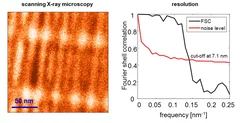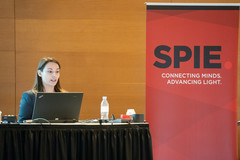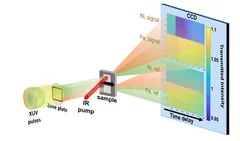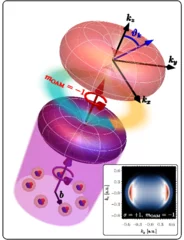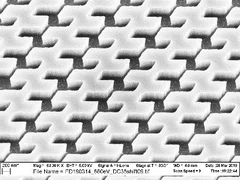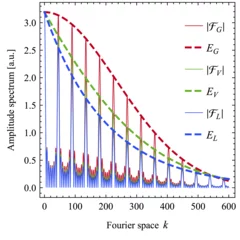Scientific Highlights
New blueprint for more stable quantum computers
PSI researchers have shown how faster and better defined quantum bits can be created. The central elements are magnetic atoms from the class of so-called rare-earth metals, selectively implanted into the crystal lattice of a material.
World Record: 7 nm Resolution in Scanning Soft X-ray Microscopy
During the past decade, scientists have put high effort to achieve sub-10 nm resolution in X-ray microscopy. Recent developments in high-resolution lithography-based diffractive optics, combined with the extreme stability and precision of the PolLux and HERMES scanning X-ray microscopes, resulted now in a so far unreached resolution of seven nanometers in scanning soft X-ray microscopy. Utilizing this highly precise microscopy technique with the X-ray magnetic circular dichroism effect, dimensionality effects in an ensemble of interacting magnetic nanoparticles can be revealed.
Finalist of the Photronics Best Student Award
Ricarda Nebling, PhD student at LMN, received a prize at the SPIE Extreme Ultraviolet Conference 2020 for her contribution: “Effects of the illumination NA on EUV mask inspection with coherent diffraction imaging”.
Two-color snapshots of ultrafast charge and spin dynamics
In a joint research effort, an international team of scientists lead by Emmanuelle Jal (Sorbonne Université) performed a time-resolved experiment at the FERMI free-electron laser to disclose the dynamic behavior of two magnetic element of a compount material in only one snapshot. The X-ray Optics and Applications group developed a dedicated optical element for this experiment that is usable with two different photon energies (colors) simultaneously.
Scientists develop a new kind of qubit based on the concept of Schrödinger’s cat
Scientists in the Applied Physics department of Yale University – one of the leading authors, Alexander Grimm, has in the meantime relocated to PSI – have developed a new device that combines the Schrödinger’s cat concept of superposition (a physical system existing in two states at once) with the ability to fix some of the trickiest errors in a quantum computation.
Photoelectric Effect with a Twist
In a joint research effort, an international team of scientists lead by Prof. Giovanni de Ninno (University of Nova Gorica, Elettra Sincrotrone Trieste) now demonstrated that an OAM-dependent dichroic effect can be observed on photoelectrons. The photoelectrons are released from a sample of He atoms that is excited by the strong extreme ultraviolet light pulses from the FERMI free electron laser, whereas the orbtial momentum is imprinted with an intense infrared laser pulse. The X-ray Optics and Applications group of PSI supported the team with their experience in the creation of OAM beams and during the experiments.
Novel optics enable better X-ray Free Electron Laser experiments
Our research on multifocus off-axis zone plates was accepted in “Optica”, the highest impact journal of the Optical Society of America. In the paper we report on different ways to combine focusing and beam-splitting functionalities in one single optical element.
Efficient analysis method for multiplet lines in Fourier space
In his first paper as lead author, LMN PhD student Adrian Beckert and co-authors demonstrate an algorithm which takes advantage of peak multiplicity to retrieve line shape information. The results were published in Optics Express and are relevant to a wide range of topics, ranging from neutron-scattering to spectroscopy of rare-earth doped solids.
To the sun and beyond
PSI takes part in space research projects. This not only expands knowledge about our astronomical home, but also reinforces Switzerland's reputation as a reliable developer of sophisticated space equipment.

